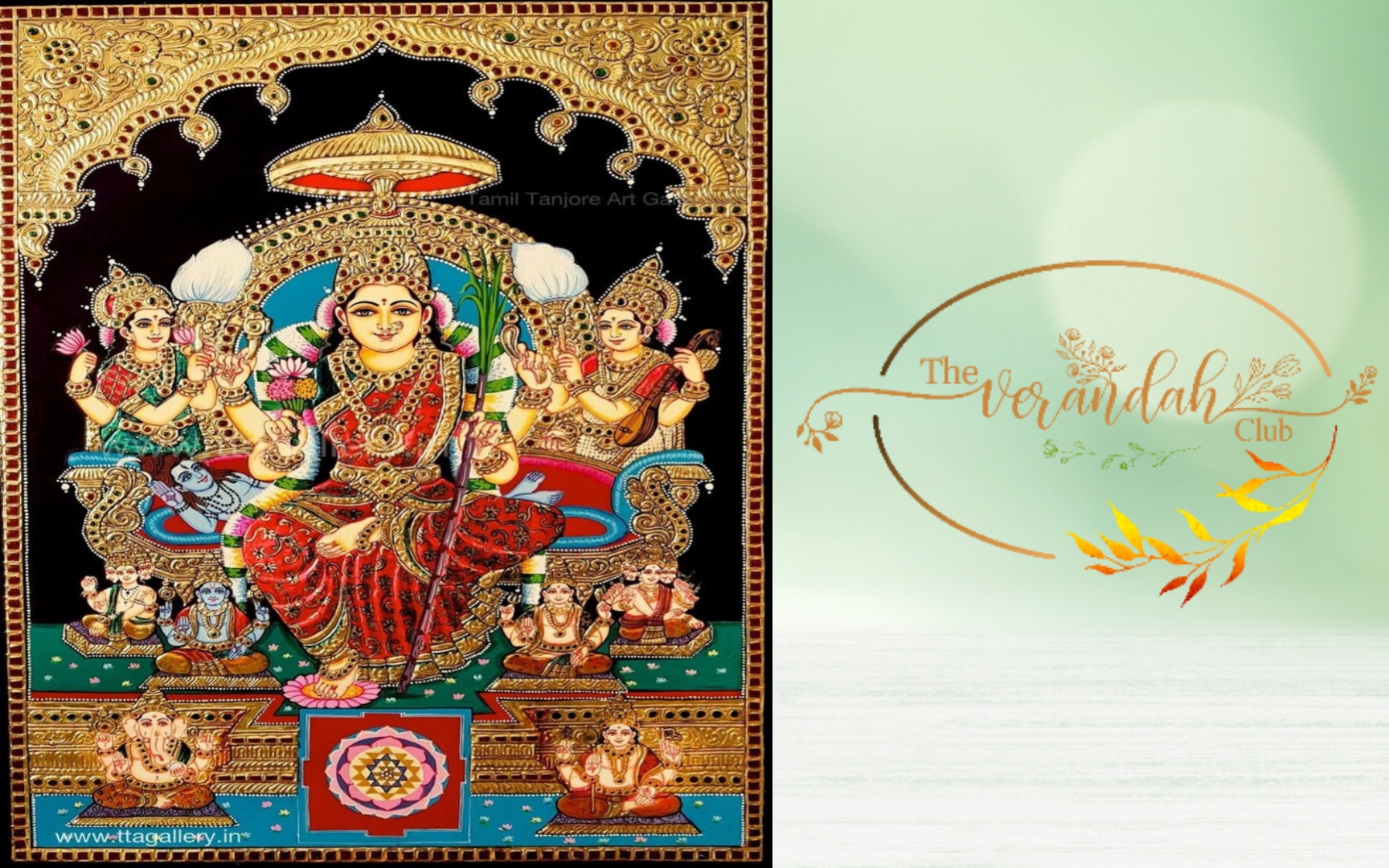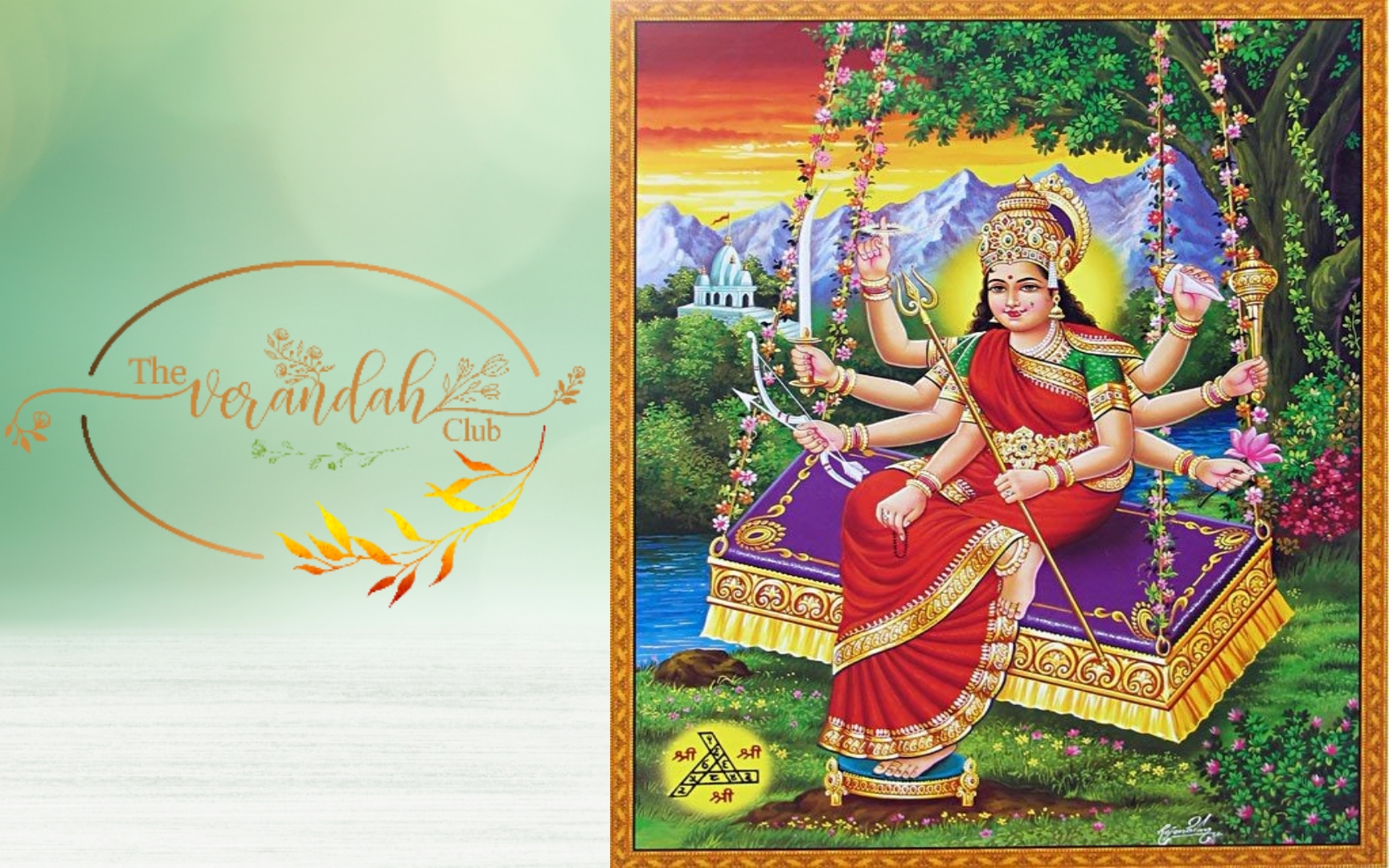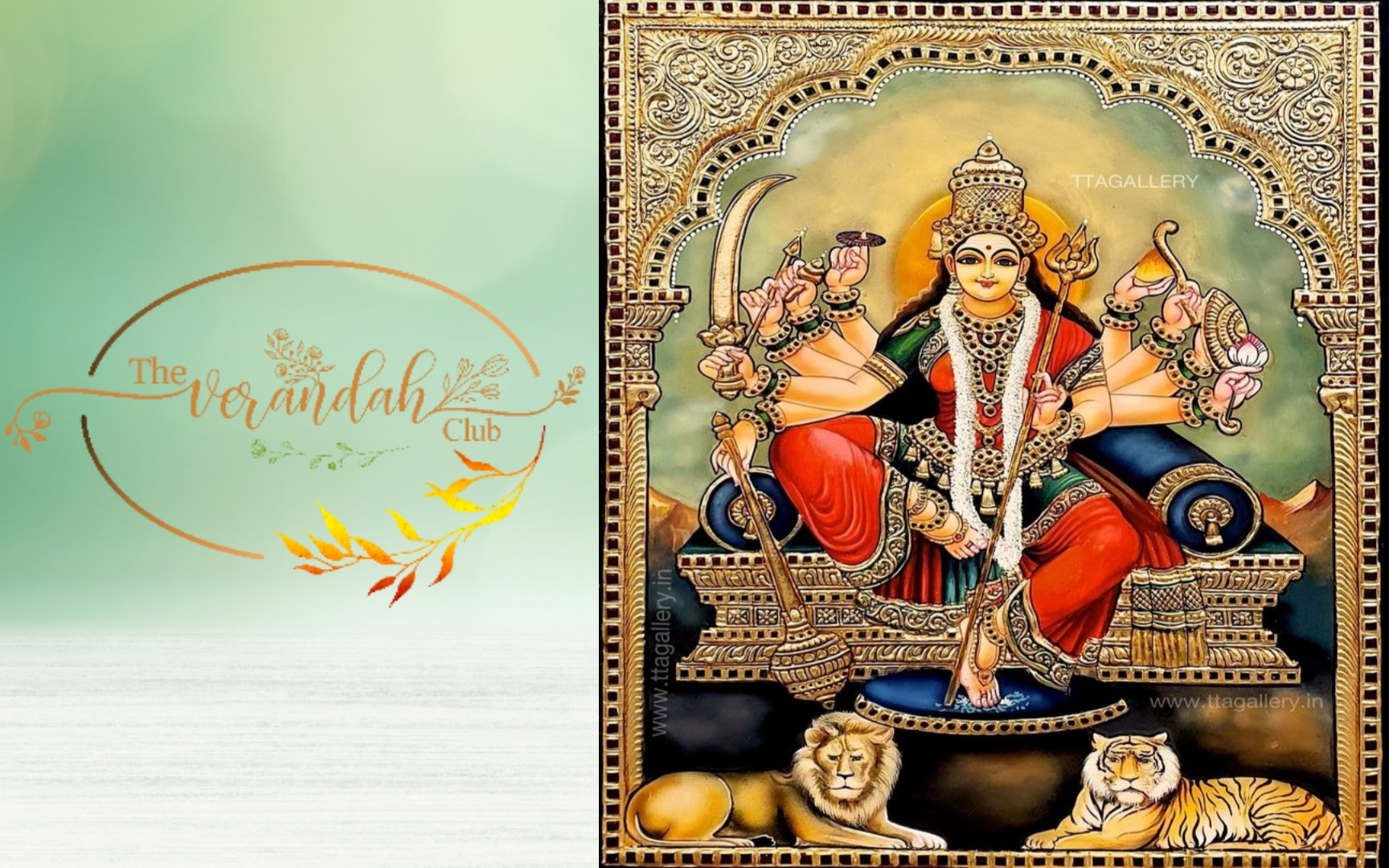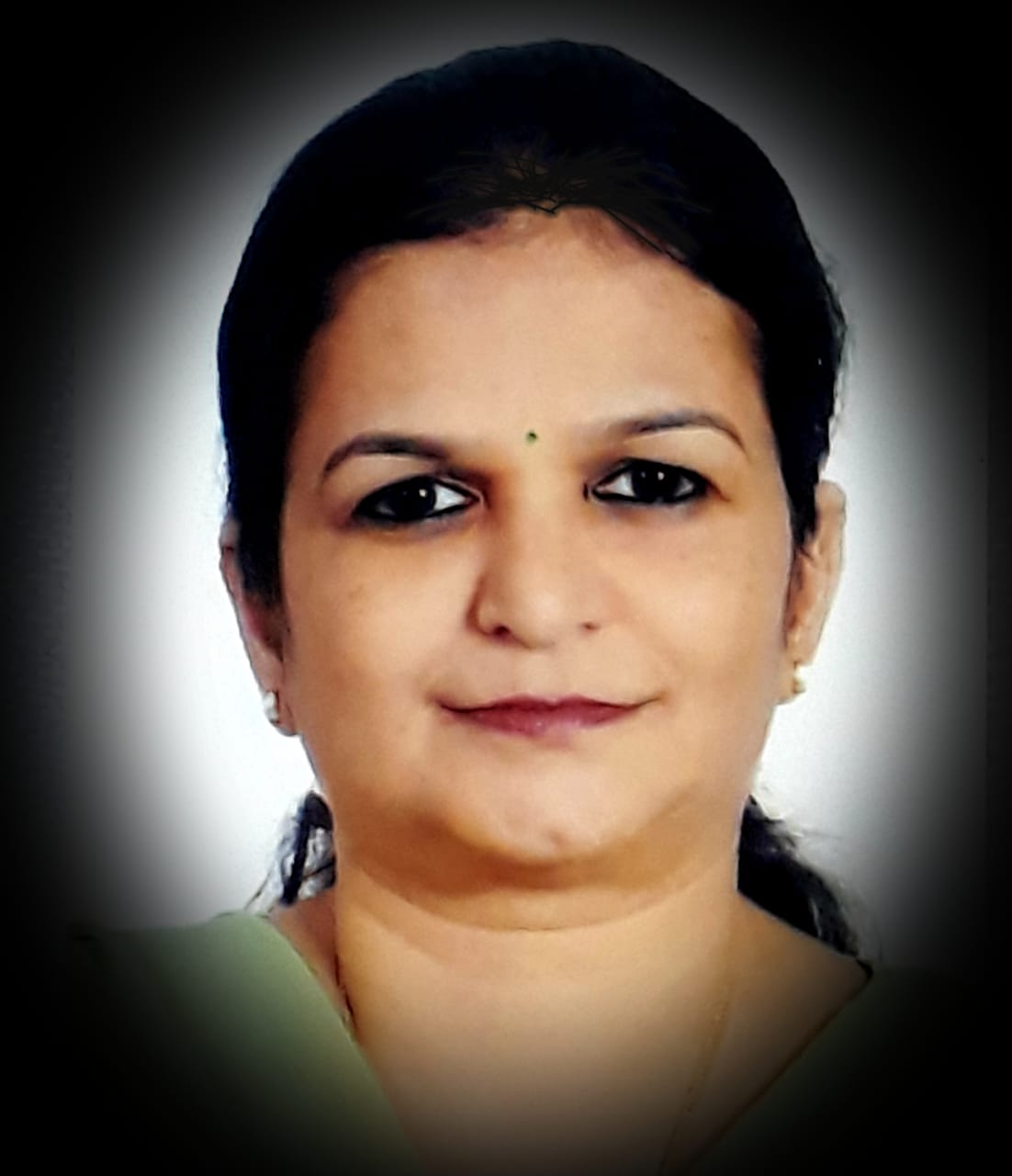
Shri Chakra Raaja Simhaasaneshwari, is a majestic composition by the divine sage Agasthiyar in praise of goddess Lalithambigai (Parvathi). Maharishi Agastya was a Vedic sage and was considered to be one of the Saptharishis (seven sages). He is the twin brother of Vashista Muni. They were both formed in a mud pitcher instead of a womb.
Aagastya Muni was multi-faceted and he excelled in all spheres of life. He was a great Tamil scholar and is considered as the ‘Father of the Tamil Language.’ He is the compiler of the first Tamil Grammar Book known as ‘Agatthiyam.’ He and his wife Lopamudra, (the princess of Vidharbha), are the celebrated authors of several hymns in Rig Veda.
He excelled in music. It is believed that he won the great musician Ravana, the Lord of Lanka in a competition, by melting the mountain with his sweet music. He founded the martial art form Silambam. He practiced the ancient science of healing using Varmam, points to cure several diseases. He also possessed yogic powers and wielded them to protect the sages.
According to the ‘Lalithopaakhyaana’ (the revered story of Sri Lalitha Tripurasundari), Sage Agastya secured the Devi’s grace to compose this song. This is a magnificent song rendered in Carnatic style. The lyric is the unique amalgamation of Sanskrit and Tamil. The first stanza is written in Sanskrit, while the following three verses are composed in lucid Tamil. The four mellifluous ragas embellishing this composition make it an adorable Raga Maalika. It is set to the Aadhi thala, a rhythmic cycle of eight beats. It is usually sung in Madhyama Shruthi.
While listening to the opening line from the Pallavi (The first verse),
‘Shri Chakra Raja Simhaasaneshwari, Sri Lalithaambigaiyey, Bhuvaneshwari,’
the audience is able to picturize the Devi seated majestically on Her Shri Chakra throne. Shri chakra is also known as Shri Yantra, it consists of nine interlocking triangles that surround a central point. She is portrayed as the supreme Empress of the world and the embodiment of Agamas (Scriptures), Vedas and all art forms. She is venerated as Janani, the mother of all movables and immovables. She is revered as Narayani (Lord Narayana’s sister). The Devi is lauded as Nataraja Manohari, the one who has captivated Nataraja (Lord Shiva), who adorns his wrists with Snakes. She is idolized as Gnyana Vidyeshwari, the epitome of wisdom and knowledge and is worshipped as Raajarajeshwari, the empress, who is the ruler of all rulers.
This verse is composed in the Raga, Senchurutti. This famed raga is mostly adopted for folk music. This Raga has a pleading tone to it. It exudes the Bhakti Rasa (devotion). It is a Nishadantya raga, and the aroha ends in the note, ‘Ni.’ The acclaimed songs in this raga are Arunagirinathar’s ‘Naadhabindu Kalaadhi,’ and Oothakaadu Venkatakavi’s ‘Maadu Meikkum Kanna.’
In the second verse, the composer Agastya conveys to Devi that the devotees eulogize Her by dancing and by singing Her praises. They also bedeck themselves with flowers from Her Lotus feet. Kanchi Kameshwari, the presiding Goddess in Kanchipuram who fulfils all the wishes of her devotees, has granted the poet the power to visualize the entire world, with single-minded steadfastness (Ekaagratha).

This verse is composed in the Raga Punnagavarali. This raga is associated to Karuna Rasa (compassion). This raga is believed to mesmerize serpents and so the snake charmers play this raga in their Magudi (a musical instrument) to allure snakes. The song, ‘Naadharmudi Mel Irukkum' is a renowned song set in this raga.
In the next stanza, the composer declares that prior to him being blessed by the Goddess, he was aimlessly roaming around. But it was Her grace that had transformed him to a noble man. He has also been fortunate to be in the company of great elderly scholars. The Goddess has vanquished the sins of his previous births, which were relentlessly pursuing him like a shadow. He extols the Devi to be Nityakalyani (the eternal bestower of auspiciousness), Bhavani, the giver of life, the source of creative energy and Padmeshwari (one who resides in a lotus).
This verse is composed in Nadhanamakriya. This raga has a meditative mood and also a certain sense of yearning. It is also a Nishadantya raga. Bhadrachalam Ramadas has composed the song, ‘Ye Theerugananu' in this raga .

The poet concludes the composition by expressing that, the Devi has put him through several trials andtribulations which has purged him of his sins. This can be likened to the manner in which Gold is smelted in the furnace for purification. The Devi has eliminated the persistent Maya (illusion), and has made him realize the true purpose of his birth. She has showered him with abundant love and has empowered him to witness her miracles. He realizes that mother Akhilandeshwari, (the ruler of the universe), is his only refuge, and he totally surrenders himself at Her lotus feet.
This verse is composed in the raga Sindhubhairavi. It is a Hindustani raga (Bhairavi), it was popularized by Tansen, the great musician of king Akbar’s court. This raga seeps with Bhakti and Karunya Rasa. The listeners derive peace and serenity, and is believed to sooth the nervous system. The renowned songs in this raga-s are ‘Venkatachala Nilayam,’ ‘Idhuvo thillai,’ and ‘Bhaja Bhaja Maanasa.’
This composition invokes the grace of all the forms of the divine Devi. It was Maharajapuram Santhanam, who has popularized this composition. This song is a treasure trove for the rasikas (connoisseurs) and transports them to a sublime transcendental state.

Yamuna is a resident of Coimbatore and is pursuing Hindustani vocal music under the tutelage of Shri Kedar Karatji. She also teaches bhajans and conducts English Grammar classes for school children. Her other passions are writing travelogues, playing keyboard, gardening, going on pilgrimages and exploring & enriching her knowledge through travel.
NEXT ARTICLE